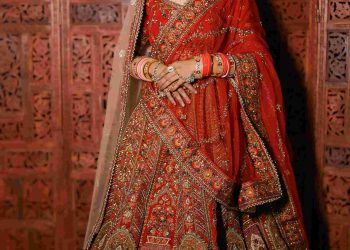Top Emerging Designers in America

America, the cradle of innovation, has long been the breeding ground for world-class design talent. But what truly sets apart the current wave of emerging designers? Their audacity to break free of tradition and their willingness to embrace risk.
This article explores the minds behind the movement and how their approach is reshaping the design landscape—not just in aesthetics, but in philosophy and purpose.
1. Where Boldness Meets Clarity
Every influential designer has a story—a defining moment when inspiration collided with courage. For many, this moment involved stepping away from conventional practices and daring to explore uncharted territories. Take, for example, Jane Adler, a New York-based designer who transformed her industry by combining cutting-edge technology with hand-crafted artistry. Jane’s groundbreaking process of using AI-assisted textile design has brought an entirely new depth to personal expression, proving that creativity thrives best under experimental conditions.
Adler herself described her work as “bridging chaos with clarity.” Her designs challenge us to rethink the purpose of textures and forms, turning commodities into art that not only serves function but also invokes emotion. Such daring breakthroughs teach us that innovation is not about following trends but creating them.
2. Rethinking Traditional Paradigms
For decades, traditional wisdom dictated that form followed function. But emerging designers are reversing this dogma, introducing the concept that function is now intertwined with cultural narratives. Vincent Brooks, a Los Angeles designer known for merging sustainability and minimalist designs, stands out for making furniture that tells a story. His recent collection, inspired by Indigenous American patterns and structures, connects modernity with history, pulling threads of craftsmanship, philosophy, and identity into a cohesive whole.
Brooks challenges us to recognize that every design tells a story, even one as seemingly mundane as a chair or lamp. “Design is storytelling,” Brooks says, “but how well are we listening?” In questioning practices that prioritize efficiency over essence, America’s emerging designers push for an introspection that extends well beyond creative fields and permeates societal consciousness.
3. Inter-disciplinary Forces: Where Design Meets Psychology
Modern design is proving to be less about individual mastery and more about collaborative fusion. Today’s innovators increasingly integrate psychology, neuroscience, and technology into their work. Consider Eva Chen, an Austin-based UX/UI designer creating virtual interfaces that reduce cognitive strain. By leveraging advancements in neural mapping, Eva ensures her designs align with the mental capacities of the end user, improving both utility and user satisfaction.
This hybrid thinking transcends aesthetics, marrying user experience with scientific precision. Chen believes that designers are educators and psychologists in disguise, tasked with decoding human behavior and reimagining the future of interaction.
Emerging designers touch not only on functional design but also on mental wellness—an increasingly critical global concern. From improved ergonomics to harmonious color schemes, these visionaries bring together disciplines, ultimately setting the stage for new industries to take shape.
4. Predicting the Future of Design
What lies ahead for America’s design ecosystem? Given the current trajectory, we can expect greater integration of artificial intelligence, sustainability, and augmented reality into mainstream practices. This era signals a shift from merely creating objects to crafting experiences. As futuristic materials like biodegradable plastics and modular components gain momentum, designers will step further into the realm of deliberate creation—designing products not just for consumption but for regeneration.
Alongside this transformation, timeless principles such as design empathy will remain central. Empathy helps designers navigate the increasingly complex expectations of global consumers. Through psychographic data analysis, future designers will anticipate emotional needs rather than simply responding to physical ones.
5. Taking Action: How You Can Engage with Emerging Design
To cultivate America’s design renaissance, individuals must actively participate in the movement—whether as creators, supporters, or thoughtful consumers. Here are actionable strategies to contribute effectively:
-
Invest in Emerging Designers:
Support local talent through purchases, partnerships, or sponsorships. Seek out their exhibitions and online platforms to help amplify their voices. -
Challenge Your Own Perspective:
Implement design thinking practices in daily life or business endeavors. Take a course or join workshops organized by design academies to stay ahead of evolving trends. -
Prioritize Personal Education:
Stay informed about advancements in materials, methodologies, and philosophies in design by reading journals or engaging in interdisciplinary collaborations. -
Adopt Sustainability:
Support eco-conscious designs, becoming part of the movement to disrupt environmentally destructive practices. Demand accountability from producers and manufacturers.
Ultimately, great design isn’t limited to professionals; it’s a shared responsibility to challenge mediocrity and inspire transformation within our broader societal fabric.
A Continuing Revolution
From Jane Adler’s fearless experiments to Vincent Brooks’ soulful storytelling and Eva Chen’s scientific precision, America’s emerging designers embody the courage to redefine both identity and possibility. Their work inspires us to embrace constant learning, elevate our expectations, and strive toward a future shaped by thoughtful, revolutionary design.
As their ideas advance, so do possibilities for transformation within all spheres—intellectual, emotional, and practical. Design is no longer a static craft but a philosophical statement. Now, the question moves to you: how will you partake in this design revolution that promises not only to improve the world we inhabit but also to reshape who we are?











